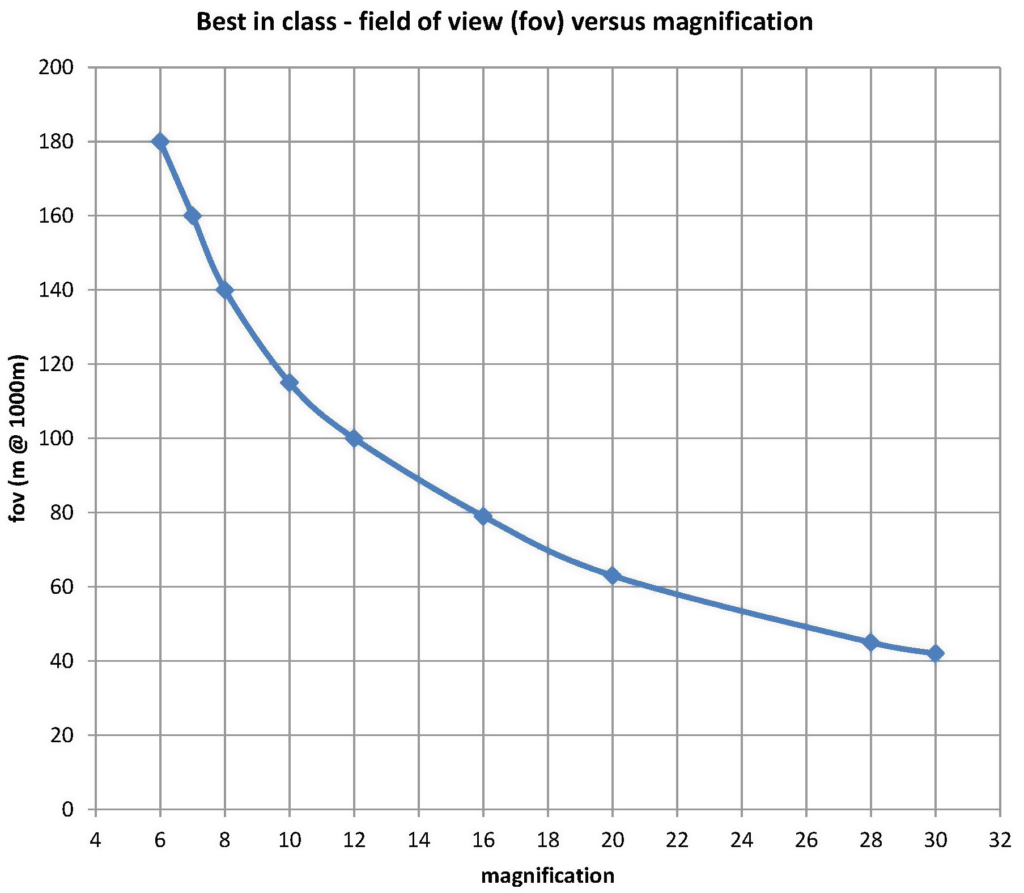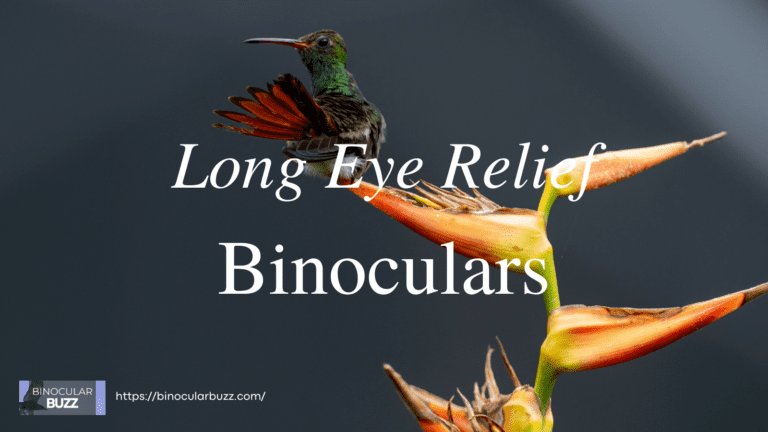What Do Binocular Numbers Mean? Comprehensive Guide [2024]
There are two numbers that define a binocular more than even its brand or model name. The two binocular numbers even have an “x” in between them to add to the mystique! So, what do binocular numbers mean?
To be fair, there are quite a few binocular numbers, besides the two prominent ones, that you need to know about. So, here is my comprehensive guide on all the binocular numbers worth knowing!
This site participates in the Amazon Services LLC Associates Program designed to give sites like ours a way to earn advertising fees by linking to products on Amazon.com at no additional cost to you. I appreciate your support. Thank you!
Understanding Binoculars Before Buying
To make an informed decision on buying the best binocular for an activity you need to understand the following about binoculars:
- Binocular Numbers (Specifications)
- Binocular Optics (Lens & Prism)
- Binocular Toughness (Weatherability)
In this article I will cover the topic of Binocular Numbers (Specifications) in some depth. Feel free to skim through the article and then come back to read about the sub-topic(s) that interest you.
I will cover the topics of Binocular Optics (Lens & Prism) and Binocular Toughness (Weatherability) in separate articles.
Binocular Numbers (Specifications)
The following are important binocular numbers that you need to understand. Your ability to buy the perfect binoculars for the intended use will largely depend on your understanding of binocular numbers,
Binocular numbers, typically cover the following:
- Binocular Magnification
- Objective Lens Diameter
- Field of View (FOV)
- Eye Relief
- Exit Pupil
- Size (Dimensions)
- Weight
Binocular Strength
Binocular strength, a combination of binocular magnification and objective lens diameter, is a subset of all the binocular numbers (albeit the most prominent one!)
The first number followed by an x is the binocular magnification and the second number is the objective lens diameter in mm.
At a very basic level, binocular strength is the key part of binocular numbers. As you can see from the images below, the three binoculars do not just differ from one another by brand, model and shape.
They actually have different binocular strength! Vortex is a 10×42, Zeiss is a 8×25 and Fujinon is a 14×40.
1. Binocular Magnification
Binocular magnification is the ability of a binocular to make an object appear closer than it actually is. Imagine looking at a small bird on a tree branch 100 feet away. You will not be able to view its detailed features with the naked eye.
Now, use a pair of binoculars with 10x magnification. The bird will appear 10 times closer, as if it were only 10 feet away! This makes it much easier to see details like its feathers and beak.
Magnification, represented by a numerical value, is the relationship between a subject’s real proportions and its magnified size.
NIKON
Here’s how binocular magnification works:
- Light rays from the object: Light rays travel outward from the object in all directions.
- Objective lens: The objective lens of the binocular (the larger lens at the front) gathers these light rays and focuses them.
- Eyepiece: The eyepiece (the smaller lens at the back) then magnifies the focused light rays, making the object appear larger.
Binocular Magnification Calculation
Binocular magnification is calculated by dividing the focal length of the objective lens by the focal length of the eyepiece. This ratio is indicated by the first number in a binocular strength (e.g., 7×35, 10×50).
Implications of Binocular Magnification Levels
The binocular magnification impacts other binocular numbers and binocular optics. Here is how:
Image Quality
- Higher magnification allows observation of finer details but may lead to image degradation.
- Quality lenses minimize distortions and aberrations, ensuring clearer images.
Field of View
- Higher magnification narrows the field of view, reducing the area visible through the binoculars.
- Balancing magnification and field of view is essential based on specific needs.
Image Stability
- Higher magnification amplifies hand movements, resulting in shaky images.
- Tripods or image stabilization technology may be necessary for stability.
Portability
- Binoculars with higher magnification tend to be larger and heavier, reducing portability.
- Consider the intended use and trade-off between magnification level and portability.
Exit Pupil
- Higher magnification results in a smaller exit pupil, affecting visibility in low-light conditions.
Practical Implications
- Stability: Lower magnification is preferable for steady viewing, such as birdwatching.
- Field of View: Lower magnification provides a wider field of view, suitable for sports or nature observation.
- Image Brightness: Lower magnification maintains brighter images, ideal for low-light conditions.
2. Objective Lens Diameter
Binocular numbers always come in pairs, such as 8×32 or 10×42. The first number, as we have just seen is the binocular magnification. The second number in this pair of binocular numbers is the objective lens diameter in mm.
The effective aperture is the inside diameter (in mm) of the objective (front) lens frame.
NIKON
Significance of Objective Lens Diameter
The objective lens diameter, represented in millimeters (e.g., 42mm, 50mm), determines the amount of light the binoculars can gather. A larger diameter allows more light to enter, resulting in a brighter and clearer image.
- More light entering through larger objective lenses enhances image brightness and clarity.
- Improved clarity ensures vivid and defined details and colors, enhancing the viewing experience, especially in low-light conditions.
Choosing the Right Objective Lens Diameter
Several factors influence the selection of objective lens diameter:
Intended Use:
- For daytime activities like birdwatching, a moderate diameter (e.g., 30mm) suffices.
- For dawn or dusk birdwatching or stargazing, opt for a larger diameter (e.g., 42mm) for better brightness and clarity.
Weight and Portability:
- Larger objective lenses increase bulkiness and weight.
- Consider the trade-off between image quality and portability based on your usage scenario.
Budget:
- Larger objective lenses come at a higher cost.
- Evaluate your priorities and budget to make an informed decision.
Practical Considerations
- Larger objective lens diameter enhances viewing experiences such as birdwatching in low ligh conditions such as dawn and dusk, when birds are most active.
- Smaller objective lens diameter increase compactness and portability which are highly desirable for for activities like hiking or travel.
- Balance image quality, portability, and budget when choosing the objective lens diameter.
Comparing Objective Lens Diameters
To help you visualize the differences in objective lens diameter, here is a comparison table showcasing three popular binocular models:
| Model | Objective Lens Diameter (mm) | Image Brightness | Image Clarity | Price Range |
|---|---|---|---|---|
| Hawke Nature-Trek Binoculars 8×32 | 32mm | Moderate | Average | Under $200 |
| Nikon Monarch M5 Binoculars 10×42 | 42mm | High | Good | Under $300 |
| Maven B6 50mm ED Binoculars 12X50 | 50mm | Very High | Excellent | Over $1000 |
As you can see from the comparison table, the larger the objective lens diameter, the higher the image brightness and clarity.
Without doubt, binocular magnification and the optical lens diameter are the two most important binocular numbers to consider when buying a pair of new binoculars. However, your research should not just stop at those two binocular numbers.
There are a few more, fairly important numbers that you should look at before making your purchase. Here are the ones that I think are pretty important, as well!
3. Field of View (FOV)
The field of view is essentially the width of the area you can see when looking through binoculars. Field of view is typically measured in two ways: linear field of view and angular field of view.
Linear field of view is expressed in feet or meters and represents the width of the observed area at a specific distance.
On the other hand, angular field of view is measured in degrees and indicates the extent of the observed area within your field of vision.

The schematic, courtesy NIKON, is a visual explanation of Binocular Field of View (FOV) and its relation to Binocular Magnification.
As an example, Nikon a well known brand has a popular line, Prostaff P7. It has 4 models under this line, but each has a different field of view (FOV) number. Here they are:
| Eye Relief (mm) | Real Angular FOV (Deg) | FOV @ 1000 Yards (Feet) | Close Focus (Feet) | Weight (oz) | |
| 8×30 | 15.4 | 8.7 | 456 | 8.2 | 17.1 |
| 10×30 | 15.4 | 6.6 | 346 | 8.2 | 16.6 |
| 8×42 | 20.2 | 7.2 | 377 | 9.8 | 20.8 |
| 10×42 | 15.7 | 7.0 | 367 | 9.8 | 21.2 |
For the same objective lens diameter, FOV drops when magnification increases. This relationship is captured in the graph below:

Wider Field of View
A wider field of view enables you to observe a larger area at a given distance, offering several advantages:
- Enhanced situational awareness: Tracking fast-moving subjects or scanning broad landscapes becomes effortless without frequent adjustments.
- Ideal for birdwatching in flight: Observing migratory birds or birds in motion becomes easier, allowing swift location and tracking.
- Improved comfort: Reduced eye strain as you can observe a broader area without constant eye or head movements.
Narrower Field of View
Conversely, a narrower field of view offers greater magnification and detail, catering to specific observation needs:
- Increased magnification: Zooming in on distant subjects becomes possible, rendering them larger and more detailed.
- Detailed observations: Essential for researchers or bird enthusiasts documenting intricate bird species’ behaviors and characteristics.
- Suitable for stationary subjects: Perfect for observing stationary subjects like the moon, providing optimal magnification and clarity.
4. Eye Relief
Eye relief is the distance from the outer surface of the eyepiece lens to the position where the exit pupil is formed (eyepoint). Looking through binoculars from the eyepoint, you can obtain the whole field of view without vignetting.
Eyeglass wearers should use binoculars with a longer eye relief (high eyepoint).
Here are some key points to consider regarding eye relief:
- Binoculars with eye relief greater than 15mm are generally considered suitable for eyeglass wearers.
- For individuals who do not wear glasses, eye relief is still important as it provides flexibility and comfort during extended periods of observation.
- Shorter eye relief may cause the image to appear smaller, making it more challenging for those with eyeglasses to observe the entire field of view.
5. Exit Pupil
Definition and Calculation
The exit pupil refers to the diameter of the light beam entering your eyes through the binoculars’ eyepiece. It’s calculated by dividing the objective lens diameter by the magnification power. For instance, in a 10×50 binocular, the exit pupil is 5mm (50mm ÷ 10).
Significance
The size of the exit pupil determines the amount of light reaching your eyes. A larger exit pupil permits more light, resulting in a brighter image, especially in low-light conditions like dawn or dusk.
Binoculars with larger exit pupils are well-suited for twilight activities such as stargazing or birdwatching.
- Binoculars with exit pupils exceeding 5mm offer excellent low-light performance.
- For daytime use, exit pupils ranging between 2.5mm and 4mm are generally adequate.
6. Size (Dimensions)
Binocular size refers to the physical dimensions of the device, namely its length, width, and height expressed in inches (centimeters).
The dimensions for binoculars classified as pocket, compact, mid-size, and full-size can vary but you can use the table below as a general guideline.
| Classification | Length | Width | Height |
| Pocket Binoculars | Less than 4 inches (10 centimeters) | Less than 4 inches (10 centimeters) | Less than 2 inches (5 centimeters) |
| Compact Binoculars | 4 to 5 inches (10 to 13 centimeters) | 4 to 5 inches (10 to 13 centimeters) | 2 to 3 inches (5 to 8 centimeters) |
| Mid-size Binoculars | 5 to 7 inches (13 to 18 centimeters) | 5 to 7 inches (13 to 18 centimeters) | 2 to 3 inches (5 to 8 centimeters) |
| Full-size Binoculars | More than 7 inches (18 centimeters) | More than 7 inches (18 centimeters) | 2 to 3 inches (5 to 8 centimeters) |
7. Weight
The weight of the binocular depends on its overall size, optical lens diameter, and the material used for the lens, prisms and body. The binocular weight is an indicator of its portability and an important consideration when buying a pair of binoculars.
Binoculars for travel, hiking, etc. must be compact and lightweight. Heavier binoculars have much better optics but may require the use of a tripod or image stabilization (IS) technology.
The weight of binoculars classified as pocket, compact, mid-size, and full-size can vary but you can use the table below as a general guideline.
| Binocular Class | Typical Weight Range (ounces) | Best Suited Activities |
|---|---|---|
| 10 – 15 oz | Traveling, Cruising, Concerts | |
| Compact | 15 – 20 oz | Hiking & Backpacking, Safari, Sporting Events |
| Mid-size | 20 – 28 oz | Birdwatching, Hunting, Wildlife Observation |
| Full-size | over 28 oz | Astronomy, Law Enforcement |
NOTE: Whenever I review a pair of binoculars I will give all the above binocular numbers in a table early on in my review post. The table below is from my Hawke Frontier HD X 8×32 Binoculars Review [2024]
| Dimensions | 4.7 x 4.6 x 2.0 inches |
| Weight | 19.0 oz |
| Magnification | 8x |
| Objective Lens Diameter | 32mm |
| Field of View | 405′ at 1000 yds |
| Apparent Angle of View | 7.7 deg |
| Eye Relief | 16.0mm |
| Exit Pupil Diameter | 4.0mm |
| Close Focus | 8.2′ |
| Prism Type | Roof Prism |










